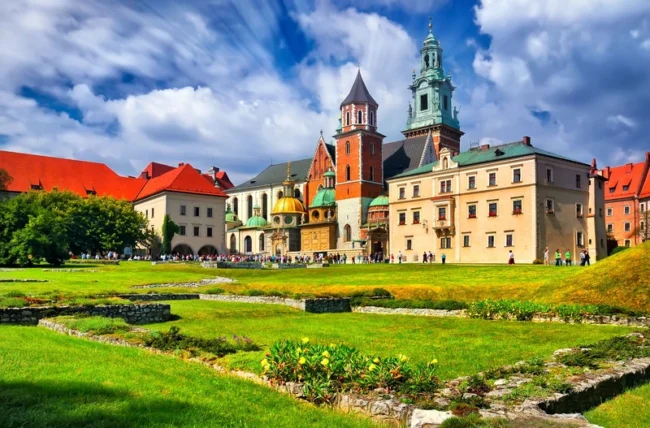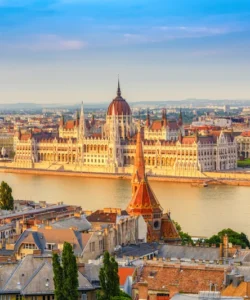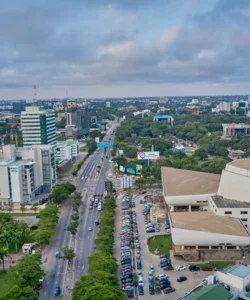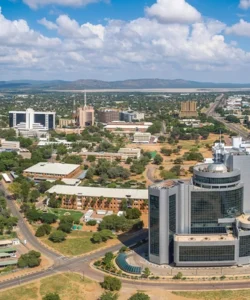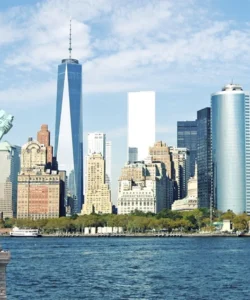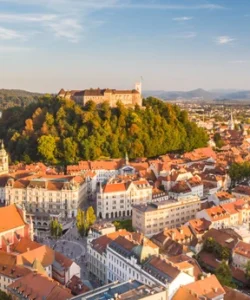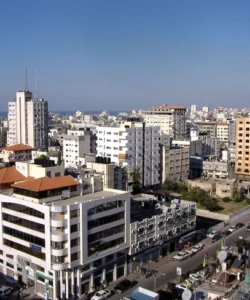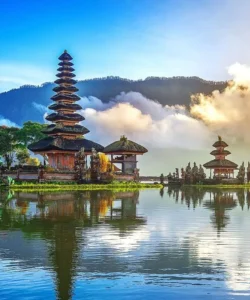Poland, officially the Republic of Poland, is a country in Central Europe. It borders Germany to the west, the Czech Republic and Slovakia to the south, Ukraine and Belarus to the east, and Lithuania and the Russian exclave of Kaliningrad Oblast to the northeast. To the north, it has a coastline along the Baltic Sea. Poland is known for its rich and complex history, vibrant culture, resilient spirit, and diverse landscapes.
Area: Approximately 312,696 square kilometers (120,732 sq mi).
Population: As of 2023, the population is estimated at around 37.9 million.
Language: The official language is Polish, a West Slavic language. English is increasingly understood, especially among younger generations and in urban and tourist areas. German and Russian are also understood by some, particularly the older generation in certain regions.
Currency: The official currency is the Polish Złoty (PLN). While a member of the European Union, Poland has not adopted the Euro.
Religion: The vast majority of the population in Poland is Roman Catholic. The Catholic Church plays a significant role in Polish society and culture. There are also much smaller communities of Orthodox Christians, Protestants, and other faiths.
Capital: Warsaw is the capital and largest city of Poland. Almost entirely rebuilt after its destruction in World War II, its Old Town is a UNESCO World Heritage site, meticulously reconstructed to its former glory. Warsaw is a dynamic city, blending historical sites with modern skyscrapers.
Major Cities: Besides Warsaw, other significant cities include Kraków, Łódź, Wrocław, Poznań, Gdańsk, Szczecin, and Lublin.
Attractions & Wonders: Poland offers a wealth of attractions, from beautifully restored medieval cities and solemn historical sites to stunning natural parks:
- Kraków:
- Main Market Square (Rynek Główny): One of the largest and most beautiful medieval squares in Europe, featuring the Cloth Hall (Sukiennice), St. Mary’s Basilica, and numerous cafes.
- Wawel Royal Castle and Cathedral: A magnificent complex that was the residence of Polish kings and a royal burial site.
- Kazimierz (Jewish Quarter): A historic district with a rich Jewish heritage, synagogues, and vibrant nightlife.
- Warsaw:
- Old Town: A UNESCO World Heritage site, a meticulous post-war reconstruction of the medieval city. Highlights include the Royal Castle, Market Square, and St. John’s Archcathedral.
- Łazienki Park (Royal Baths Park): A beautiful park with palaces, pavilions, and an amphitheater, including the Palace on the Isle.
- Warsaw Uprising Museum: A powerful and moving museum dedicated to the 1944 Warsaw Uprising.
- POLIN Museum of the History of Polish Jews: An award-winning museum exploring the thousand-year history of Jews in Poland.
- Auschwitz-Birkenau Memorial and Museum: A solemn and profoundly moving UNESCO World Heritage site, the former Nazi concentration and extermination camp, serving as a stark reminder of the Holocaust.
- Wieliczka Salt Mine: A UNESCO World Heritage site near Kraków, an astonishing underground complex of chapels, sculptures, and chandeliers carved entirely from salt.
- Gdańsk: A beautiful port city on the Baltic Sea, known for its meticulously rebuilt Old Town, Neptune’s Fountain, Long Market, and its pivotal role in Solidarity and the fall of communism.
- Malbork Castle: A UNESCO World Heritage site, the largest castle in the world by land area, a massive Teutonic Order fortress.
- Białowieża Forest: A UNESCO World Heritage site, one of Europe’s last remaining primeval forests, home to the European bison.
- Tatra Mountains: Part of the Carpathian mountain range, offering stunning alpine landscapes, hiking, and skiing (Zakopane is a popular resort town).
- Wrocław: Known for its charming Market Square, Gothic architecture, and the hundreds of small dwarf statues scattered throughout the city.
- Poznań: Famous for its Renaissance Old Town, especially the Old Market Square with its daily goat show on the Town Hall.
Architecture: Polish architecture reflects its complex history, with influences from various European styles:
- Gothic: Visible in numerous churches (e.g., St. Mary’s Basilica in Kraków) and castles.
- Renaissance: Beautiful examples in Kraków (Wawel Castle courtyard, Cloth Hall) and Zamość (a UNESCO-listed Renaissance town).
- Baroque: Flourished in the 17th and 18th centuries, seen in many churches, palaces, and urban developments.
- Neoclassical: Prominent in 19th-century public buildings and some residential areas, particularly in Warsaw.
- Art Nouveau: Found in some early 20th-century buildings in major cities.
- Post-War Reconstruction: A defining characteristic, especially in Warsaw and Gdańsk, where historic centers were meticulously rebuilt after extensive wartime destruction.
- Soviet Era: Large, functionalist socialist-realist buildings and utilitarian apartment blocks (e.g., Palace of Culture and Science in Warsaw) are remnants of the communist period.
- Contemporary: Modern Polish architecture is diverse and dynamic, with innovative designs, often blending modern aesthetics with historical context, especially in new cultural institutions and commercial developments.
Roads: Poland has a rapidly improving road network. Significant investments have been made in recent years to develop motorways (A-roads) and expressways (S-roads), connecting major cities and borders. While some older regional roads may still vary in quality, the main routes are generally well-maintained and efficient for travel.
Hotels: Poland offers a comprehensive range of accommodation options. In major cities, you’ll find a wide selection of international hotel chains (e.g., Hilton, Marriott, Radisson), upscale boutique hotels, budget-friendly hotels (e.g., Ibis, Campanile), and numerous hostels. Throughout the country, especially in popular tourist regions like the Tatras or Baltic coast, there are charming guesthouses, traditional inns (pensjonaty), spa resorts, and agritourism farms.
Restaurants: Polish cuisine is hearty, rich, and flavorful, often described as comfort food, with influences from Slavic, German, Jewish, and other Central European culinary traditions.
- Major cities like Kraków and Warsaw have thriving culinary scenes, offering traditional Polish restaurants, fine dining, and a vast array of international cuisines.
- Traditional Polish Dishes:
- Pierogi: Dough dumplings, often filled with various savory (meat, potato and cheese, sauerkraut and mushroom) or sweet (fruit) fillings, boiled or fried.
- Bigos: “Hunter’s stew,” a hearty stew made with sauerkraut, fresh cabbage, various cuts of meat (pork, beef, sausage), mushrooms, and spices.
- Żurek: A sour rye soup, often served with white sausage and hard-boiled egg.
- Kotlet schabowy: A breaded pork cutlet, similar to a schnitzel, often served with potatoes and cooked cabbage.
- Barszcz (Borscht): Clear red beetroot soup, often served with small mushroom dumplings (uszka) for Christmas.
- Gołąbki: Cabbage rolls filled with minced meat and rice, simmered in tomato sauce.
- Oscypek: A distinctive smoked cheese made from salted sheep milk, characteristic of the Tatra Mountains region.
- Obwarzanek krakowski: A ring-shaped bread, similar to a bagel, a popular snack in Kraków.
- Vodka: Poland is famous for its vodka, with many traditional and flavored varieties.
- Pastries and Cakes: Poland has a rich tradition of delicious pastries, including pączki (doughnuts) and sernik (cheesecake).
- Milk Bars (Bary Mleczne): Traditional, subsidized cafeterias offering inexpensive Polish home-style cooking.
